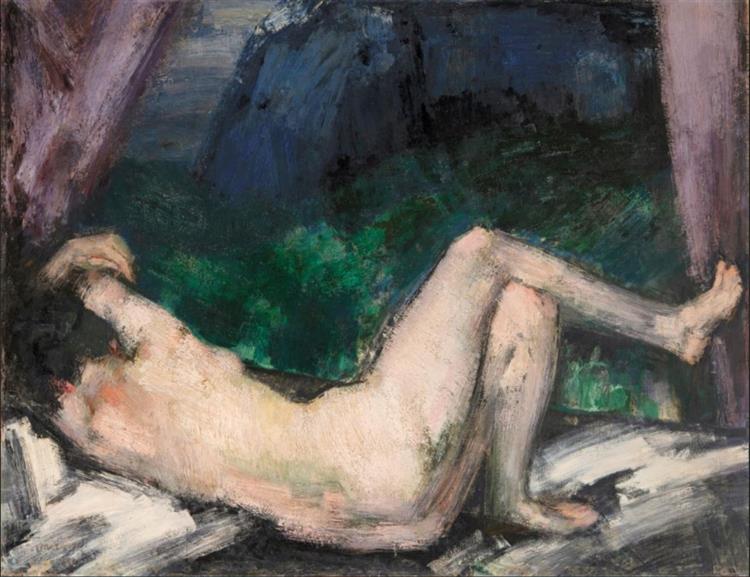Description
János Vascary, one of the most prominent figures of Hungarian modernism, left an indelible mark on art history with its innovative and eclectic approach. His painting "Fekv? Akt 1919" ("Naked reclining 1919") is a magnificent representation of the freedom and audacity of his style. With a deep understanding of the artistic currents of his time, Vasaryry manages to capture the very essence of human form through a composition that, although apparently simple, is loaded with complexity and nuances.
In "Fekv? Akt 1919", we observe a reclined female figure, whose position evokes serenity and vulnerability that significantly contrast with the less defined fund. The work is imbued with a delicate balance, where the naked body becomes the epicenter of the composition. The choice of colors is particularly significant. Vasistry opts for a rather limited palette, dominated by warm and terrible tones. The use of cream and ocher colors in the skin of the figure creates an almost palpable texture, while the darkest tones of the background add a feeling of depth and mystery.
The Vascary technique is distinctive; Its brushstroke is fluid, almost light, allowing the female body lines to be drawn with a naturalness and expressiveness that transcend the mere anatomical representation. Your approach reminds the greats masters of post -impressionism, but it also carries a symbolic burden of symbolism and Art Nouveau, styles that influenced Vasaryy at different stages of his career. What is particularly fascinating in the figure in "Fekv? Akt 1919" is its ability to transmit a wide range of emotions through a static position. The reclined woman seems lost in a quiet dream or in a deep introspection, stripping before the viewer's eyes.
The space around the figure is not defined concretely; It is almost abstract, which even more emphasizes the centrality of the nude. The background strokes, with their lack of precise details, suggest an environment that could be both mental and physical, leaving open interpretations for those who observe the work. This spatial ambiguity is a tool that Vascary handles with a mastery, allowing the human figure to be both an object of aesthetic contemplation and a vehicle for deeper psychological explorations.
It is important to contextualize "Fekv? Akt 1919" within the trajectory of Vasaryry and the period in which it was created. 1919 was a tumultuous year in Hungary, marked by significant political and social changes. This unstable environment may have influenced the creation of a work that seeks a refuge in eternal serenity of human form, a constant amid turbulence. Vasary's work reflects a search for beauty and order in a world that, at times, seemed to be losing both.
In summary, "Fekv? Akt 1919" is a work that encapsulates the ability of János Vasmy to combine influence and originality, technique and emotion. Through this painting, the artist invites us to contemplate not only the external form of the human body, but its internal resonances and its inherent mystery. It is a piece that continues fascinating and challenging spectators, consolidating their place as a treasure within the Hungarian artistic legacy and European modernism in general.
KUADROS ©, a famous paint on your wall.
Hand-made oil painting reproductions, with the quality of professional artists and the distinctive seal of KUADROS ©.
Art reproduction service with satisfaction guarantee. If you are not completely satisfied with the replica of your painting, we refund your money 100%.

